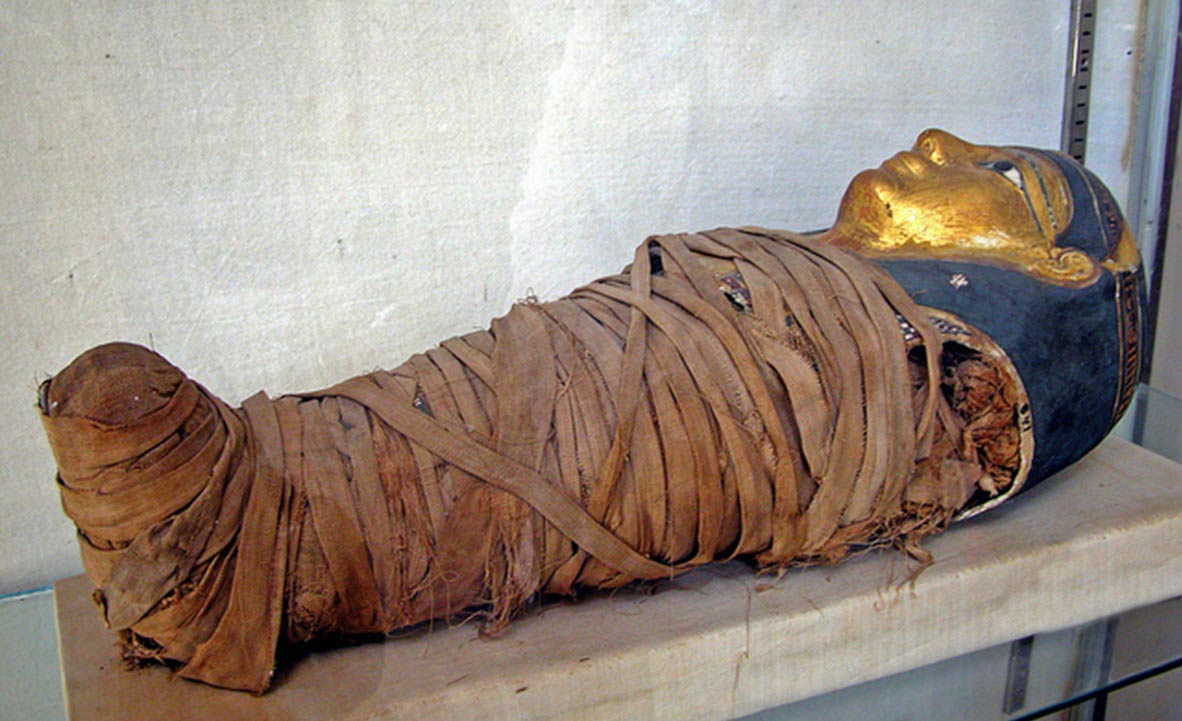Egyptian Child Mummy Dumped in Garbage in France, Now Restored and Protected
The mummy of an ancient Egyptian child was saved from a municipal dump and is set to go on display for the first time outside Paris. The 2,000-year-old mummified body and casket are thought to have been in the possession of a Napoleonic general before they were unceremoniously dumped in a rubbish pile in France.
Dump employee Jean-Louis Parichon spoke briefly with the local woman who brought the “cumbersome” toddler and decorated coffin to the municipal dump at Rueil Malmaison in 2001.
He recalled to The Guardian, “She said: 'Where shall I put this, it's a mummy?' We weren't sure exactly what she was on about. She just said she was clearing her cellar.”
“I immediately saw it was an extraordinary thing and put it to one side. Then when I'd stopped being astonished, I called the town museum,” he said.
During the 15,000 euro restoration of the artifact, funded largely through public donation, researchers deduced that the child was about four years old when she died, and her name was Ta-Iset, (she of Isis), reports The Telegraph.
- Ancient Egyptian mummies found floating in sewage water in Egypt
- Archaeologists reveal contents of 1,600-year-old Roman child coffin
- Egyptian Mummies – to unwrap or not to unwrap?
Inscriptions on the small coffin, as well as hieroglyphics and stylized bird feather images revealed the name of the mummy. Ta-Iset is believed to have lived around 350 BC and was from the Akhmim region on the east bank of the Nile River. She is thought to have belonged to the Egyptian middle class, due to the quality of her burial wrappings and coffin.
Radiographic scans showed the body measures 92.5 centimeters (36.4 inches) and the skeleton is whole and well preserved. The head is angled to rest upon the chest, writes The Telegraph.

Mummy undergoing CT scanning. Representational image. Credit: University of Vermont, Rajan Chawla
The linen bandages were badly damaged, and director of the history museum at Reuil Malmaison, Marie-Aude Picaud said “A cut from a knife is visible on the side showing that certain people have already tried to see if [the casket] contained precious metals or amulets.”
- The Liber Linteus: An Egyptian Mummy Wrapped in a Mysterious Message
- Rare Byzantine Coins and Gold Uncovered in Ancient Garbage Pit
- Art, Meds, and Fuel - The Surprising Historical Uses of Ancient Mummies
The Egyptian artifact had been brought back from Egypt in the mid-1850s by one of Napoleon’s generals. It had languished in a Rueil Malmaison cellar for decades and had nearly been thrown away, were it not for the efforts of the municipal employees.
At the end of the 18 th century ‘Egyptomania’ gripped Europe after Napoleon’s campaign into Egypt and Syria. Mysterious and provocative Egyptian antiques and relics became extremely valuable commodities, and mummy ‘unwrapping parties’ were held for purposes of research and entertainment. Not seen or regarded as the remains of loved ones, mummies were instead treated as a commodity, a curiosity, and a relic of an ancient age.

Bonaparte Before the Sphinx, (ca. 1868) by Jean-Léon Gérôme. Public Domain
AMA reported in 2013, “According to a credible source, the mummy was brought from Egypt by General Noël Varin-Bey (1784-1863), formerly an officer under Napoleon. At the service of Egypt’s viceroy, Mehmet-Ali, from 1830, Varin-Bey founded a cavalry school in Giza and became General of the Egyptian army. Upon returning to France, he moved to Rueil-Malmaison in 1857 with the mummy in his luggage.”
Luckily, the remains of Ta-Iset were recovered and have found a new dedicated home at the Reuil Malmaison History Museum, where they will remind visitors of the lives (and deaths) of ancient Egypt, and the long-lasting ramifications of mummies being gifted as curiosities or rewards.
Featured Image: Mummy of a child with a gilded face mask. Greco-Roman Museum, Alexandria, Egypt. Representational image only. Dennis Jarvis/Flickr
By Liz Leafloor



















Comments
I want to receive your news letter. I love reading all the different stories.